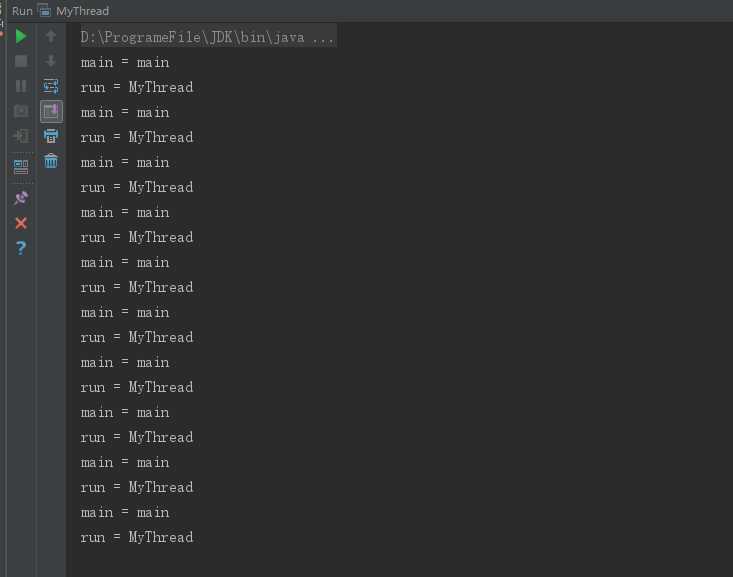Java線程總結(一)
阿新 • • 發佈:2017-12-24
extend pub ren xtend private rri for print 分享
首先,先貼上一個簡單的線程實例:
public class MyThread extends Thread{ @Override public void run(){ try { for (int i = 0; i < 10; i++){ int time = 1000; Thread.sleep(time); System.out.println("run = " + Thread.currentThread().getName()); } }catch (InterruptedException e){ e.printStackTrace(); } } public static void main(String[] args) { MyThread myThread = new MyThread(); myThread.setName("MyThread"); myThread.start(); try{ for (int i = 0; i < 10; i++){int time = 1000; Thread.sleep(time); System.out.println("main = " + Thread.currentThread().getName()); } }catch (InterruptedException e){ e.printStackTrace(); } } }
運行結果如下:

由運行結果可以看出,程序中有兩個線程,一個是主線程,另一個是我手動創建的線程,主線程都是jvm創建的。
線程執行start()方法不代表線程的啟動順序,如下例:
public class MyThread extends Thread{ private int i; public MyThread(int i){ super(); this.i = i; } @Override public void run(){ System.out.println(i); } public static void main(String[] args) { MyThread thread1 = new MyThread(1); MyThread thread2 = new MyThread(2); MyThread thread3 = new MyThread(3); MyThread thread4 = new MyThread(4); MyThread thread5 = new MyThread(5); MyThread thread6 = new MyThread(6); MyThread thread7 = new MyThread(7); MyThread thread8 = new MyThread(8); MyThread thread9 = new MyThread(9); MyThread thread10 = new MyThread(10); thread1.start(); thread2.start(); thread3.start(); thread4.start(); thread5.start(); thread6.start(); thread7.start(); thread8.start(); thread9.start(); thread10.start(); } }
運行結果如下,執行順序與調用start()方法的順序不一致:

Java線程總結(一)
